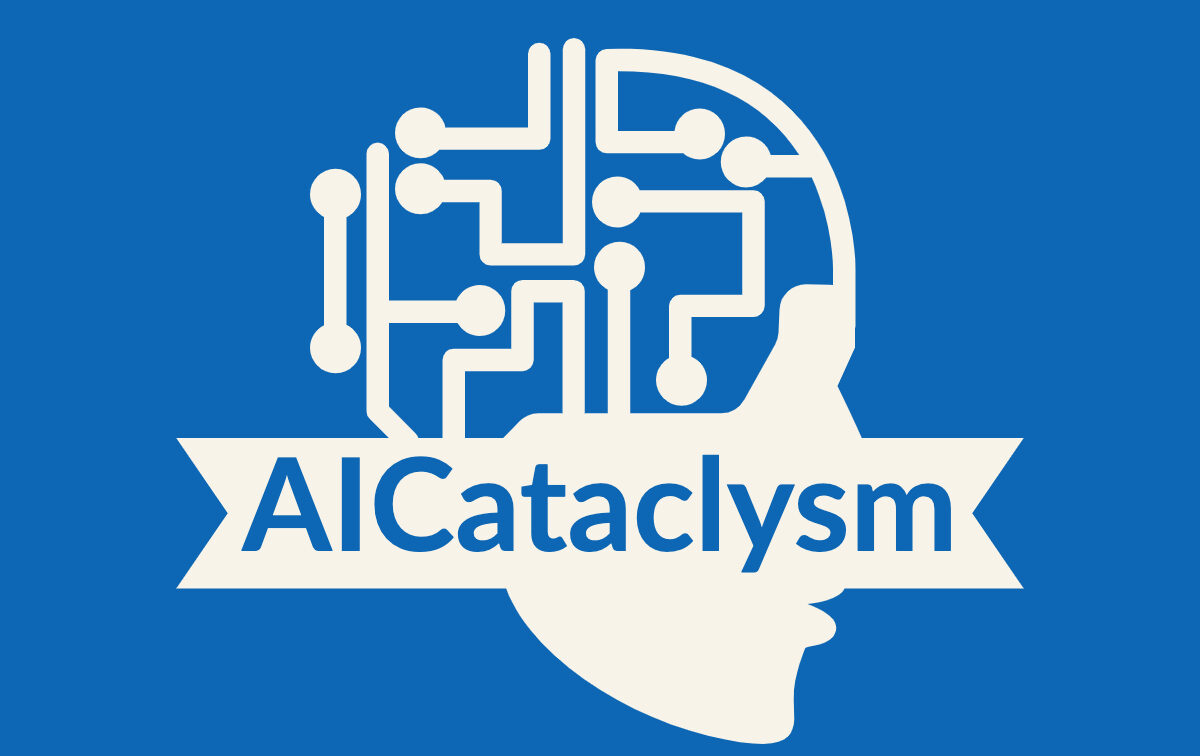Artificial intelligence (AI) has experienced significant advancements in recent years, propelling the development of cutting-edge AI solutions and leading machine learning models. As a journalist covering the latest AI advancements, I am excited to delve into the world of top AI technologies and explore what is considered the smartest AI software today.
When it comes to advanced artificial intelligence systems, several prominent names come to mind. OpenAI’s GPT-4, DeepMind’s AlphaZero, IBM Watson, and Tesla Autopilot are just a few examples of the extraordinary achievements in the field. These AI systems have made significant strides in various applications, showcasing their unparalleled intelligence and pushing the boundaries of what AI can accomplish.
Key Takeaways:
- GPT-4, AlphaZero, IBM Watson, and Tesla Autopilot are some of the smartest AI software today.
- These advanced AI systems demonstrate exceptional intelligence in language processing, game playing, and autonomous driving.
- AI continues to evolve rapidly, with new advancements and innovative uses on the horizon.
- Winston AI offers advanced plagiarism detection and content authenticity, while Sofia showcases advancements in robotics and humanoid interaction.
- GPT-5, the next iteration of OpenAI’s language model, promises enhanced language understanding and creativity.
GPT-4: The Language Model Powerhouse
GPT-4, developed by OpenAI, is a language model that demonstrates exceptional capabilities in Natural Language Processing (NLP). With 175 billion parameters, GPT-3 is one of the largest and most powerful language models ever created.
It can perform a wide range of language tasks, including language translation, text summarization, and question answering. GPT-4‘s advanced voice processing abilities allow it to generate human-like responses and have found applications in industries such as education, journalism, and marketing.
GPT-4‘s significance lies in its vast size and its ability to process and generate language-based content. Its scale ensures that it captures extensive information and patterns, making it highly effective in understanding and producing human-like text.
The language model is trained on a diverse range of data sources, giving it a broad knowledge base to draw upon. This wealth of information enables the model to provide in-depth and contextually relevant responses to a wide array of queries and prompts.
Key Features of GPT-4:
- Large-scale language model with 175 billion parameters
- Advanced Natural Language Processing (NLP) capabilities
- Ability to perform various language tasks such as translation and summarization
- State-of-the-art voice processing for generating human-like responses
- Applications in education, journalism, marketing, and more
Overall, GPT-4‘s groundbreaking advancements in language processing have paved the way for a new era in AI applications. Its ability to understand and generate human-like text opens up endless possibilities for enhancing user experiences and driving innovation in various fields.
| Advantages of GPT-4 | Limitations of GPT-4 |
|---|---|
|
|
AlphaZero: Mastering Games Without Rules
In the world of game-playing AI, AlphaZero stands out as a remarkable example of ingenuity and self-improvement. Developed by DeepMind, a subsidiary of Google, AlphaZero has conquered complex games such as chess, shogi, and go, demonstrating its exceptional abilities in gameplay and strategy.
Unlike traditional game-playing AI that relies on explicit rules and human knowledge, AlphaZero takes a different approach. It is a self-taught AI that learns solely through reinforcement learning, allowing it to develop innovative strategies and surpass human-level performance in these challenging games.
By using advanced algorithms and a massive neural network, AlphaZero goes beyond the abilities of human players, exploring new possibilities and strategies that were previously unknown. Its self-improvement capabilities are a testament to the power of an AI system that lacks traditional guidance and restrictions.
AlphaZero’s success in games like chess, shogi, and go has captivated the AI community and showcased the potential of AI in complex problem-solving. It has revolutionized our understanding of how AI can learn and excel in environments with complex rules and high levels of uncertainty.
“AlphaZero’s ability to achieve remarkable mastery in games without explicit rules highlights the incredible potential of self-taught AI and its implications for problem-solving in various domains.” – DeepMind Researcher
The game-playing prowess of AlphaZero has led to advancements in other fields beyond gaming. Its ability to analyze complex situations and make strategic decisions has been applied to real-world problems, such as optimizing supply chain networks and financial portfolio management.
AlphaZero’s remarkable achievements in game-playing AI have opened up new horizons for research and innovation. As we continue to advance in the field of AI, we can expect further breakthroughs in self-taught AI and its application in complex games and problem-solving domains.
The Potential of AlphaZero in Game Mastery
AlphaZero has redefined the possibilities of game mastery. By learning solely through reinforcement learning and without human knowledge, it has demonstrated the potential for self-improvement and innovation in game-playing AI.
Here are a few key aspects that contribute to AlphaZero’s success:
- Unsupervised Learning: AlphaZero learns by playing games against itself, without any human guidance or predefined rules. This allows it to explore unconventional strategies and discover innovative solutions that transcend traditional gameplay.
- Adaptability: Through continuous self-improvement, AlphaZero adapts its strategies based on the outcomes of previous games. It learns from both successes and failures, constantly refining its approach to achieve optimal gameplay.
- Generalization: AlphaZero’s ability to generalize its learnings across different games enables it to excel in a variety of complex game environments. This showcases its capacity for abstract reasoning and problem-solving.
AlphaZero’s game mastery capabilities have far-reaching implications for not only game development but also various real-world applications, including robotics, financial modeling, and cybersecurity. Its advancements pave the way for AI systems that can learn and excel in complex, dynamic environments.
IBM Watson: The AI Powering Industries
IBM Watson is an AI system developed by IBM that harnesses the power of natural language processing (NLP), machine learning, and other cutting-edge techniques to perform a wide range of tasks. This advanced AI system excels in areas such as language translation, speech recognition, and information retrieval, making it an invaluable tool for various industries.
Utilizing NLP, IBM Watson has the ability to understand and analyze human language, enabling it to interpret complex queries and provide accurate responses. It leverages machine learning algorithms to continuously improve its performance and adapt to changing user needs.
“IBM Watson’s natural language processing capabilities provide a seamless and intuitive experience for users, allowing them to interact with the AI system using everyday language.”
IBM Watson’s language translation capabilities enable businesses to communicate with customers and partners across different languages, breaking down language barriers and facilitating global collaboration. Additionally, its speech recognition feature allows for accurate and efficient voice-based interactions with the system.
With its information retrieval capabilities, IBM Watson can quickly and efficiently extract relevant information from vast amounts of data, enabling businesses to make informed decisions and gain valuable insights. This makes it an invaluable tool in industries such as healthcare, finance, and customer service.
Impact on Industries:
IBM Watson is revolutionizing industries by providing intelligent solutions and transforming the way businesses operate. Here are some examples of how IBM Watson is making an impact:
- Healthcare: IBM Watson’s advanced AI capabilities support medical professionals in diagnosing illnesses, analyzing patient data, and recommending personalized treatment plans.
- Finance: IBM Watson is employed in the finance industry to analyze market trends, manage portfolios, and provide personalized financial advice.
- Customer Service: With its natural language processing and machine learning capabilities, IBM Watson enhances customer service by providing automated responses, understanding customer queries, and resolving issues more efficiently.
| Industry | Applications of IBM Watson |
|---|---|
| Healthcare | Diagnosis assistance, personalized treatment plans, medical research |
| Finance | Portfolio management, market analysis, financial advice |
| Customer Service | Automated support, intelligent chatbots, efficient issue resolution |
As IBM Watson continues to evolve and advance, its capabilities are expected to grow even further, opening up new possibilities and innovations across various industries.
Tesla Autopilot: Driving the Future of Autonomous Vehicles
Tesla Autopilot, developed by Tesla, is a revolutionary self-driving car system that harnesses the power of artificial intelligence (AI) to transform the way we drive. Utilizing advanced AI algorithms, Tesla Autopilot takes control of key driving functions such as steering, acceleration, and braking, paving the way for a future dominated by autonomous vehicles.
Thanks to AI-controlled driving, autonomous vehicles equipped with Tesla Autopilot can navigate roads, highways, and even complex city environments with remarkable precision and safety. By continuously analyzing data from an array of sensors and cameras, the system makes real-time decisions to ensure optimal driving performance.
With Tesla Autopilot, vehicles can accurately detect objects, pedestrians, and other vehicles, allowing for proactive collision avoidance and enhanced safety on the road. The AI-driven system is continually learning and improving, updating its algorithms based on billions of miles of real-world driving data.
The Benefits of Tesla Autopilot
- Enhanced Safety: Tesla Autopilot’s AI technology enables vehicles to detect potential hazards and react faster than human drivers, preventing accidents and minimizing the risk of collisions.
- Efficient Driving: By analyzing traffic patterns, road conditions, and optimal driving routes, Tesla Autopilot can optimize driving efficiency, reducing fuel consumption and carbon emissions.
- Reduced Driver Fatigue: With the ability to handle monotonous driving tasks, Tesla Autopilot alleviates driver fatigue, making long journeys safer and more comfortable.
- Time-Saving: Autonomous vehicles equipped with Tesla Autopilot allow drivers to focus on other tasks or relax during their journey, maximizing productivity and leisure time.
- Future-Proofing: Tesla Autopilot’s continuous advancements in AI-controlled driving technologies position Tesla as a pioneer in the autonomous vehicle market, ready to adapt to the future of transportation.
Challenges and Future Developments
Although Tesla Autopilot boasts impressive capabilities, it is essential to note that autonomous driving faces unique challenges, including regulatory frameworks, public acceptance, and technical limitations. As AI and autonomous vehicle technologies evolve, these challenges are actively addressed by governments, researchers, and industry leaders.
Looking ahead, Tesla continues to invest in AI research and development, aiming to enhance the functionality and safety of Tesla Autopilot. With each software update, Tesla’s fleet of vehicles becomes smarter, making strides towards a future where autonomous vehicles are the norm.
As the adoption of autonomous vehicles expands, Tesla Autopilot remains at the forefront of AI-controlled driving, revolutionizing the way we travel and setting the stage for a future that embraces the potential of autonomous vehicles.
Evaluating AI Intelligence: Measuring the Smartness
Evaluating the intelligence of AI systems is a complex and intriguing endeavor. Traditional intelligence measures like IQ, which are designed to assess human cognitive abilities, do not directly apply to AI. Instead, researchers have devised various methods to gauge the smartness of AI systems and their proficiency in cognitive tasks. These methods encompass a combination of human evaluation, machine learning metrics, cognitive tasks, and the famous Turing test.
One of the most well-known methods used to evaluate AI intelligence is the Turing test. Invented by the renowned mathematician and computer scientist Alan Turing, this test assesses an AI system’s ability to exhibit human-like behavior and generate responses indistinguishable from those of a human. The test involves a human evaluator engaging in a conversation with both a human and an AI, with the evaluator’s goal being to correctly identify which is the AI. If the AI successfully convinces the evaluator that it is a human, it can be considered highly intelligent.
Another approach to evaluating AI intelligence involves cognitive tasks. These tasks aim to assess an AI system’s ability to understand and perform tasks that require human-like cognition, such as language understanding, problem-solving, and reasoning. By measuring an AI’s performance in cognitive tasks, researchers can gain insights into its level of intelligence and compare it to human capabilities.
Machine learning metrics play a critical role in evaluating AI systems as well. These metrics assess an AI’s performance on specific tasks and provide quantitative measures of its abilities. For example, in natural language processing (NLP), metrics like BLEU score and perplexity are used to evaluate the accuracy and fluency of AI-generated text. These metrics help quantify the AI’s proficiency in language understanding and generation.
Human evaluation is also an essential component in measuring the smartness of AI systems. Humans can provide subjective assessments of AI performance, evaluating factors such as naturalness of responses, coherence, and creativity. Their opinions and judgments form a crucial aspect of AI evaluation, serving as a benchmark to compare against machine-derived metrics.
Overall, evaluating AI intelligence requires a multifaceted approach that combines methods such as the Turing test, cognitive tasks, machine learning metrics, and human evaluation. These approaches collectively provide insights into the various facets of AI intelligence, helping researchers assess and compare the smartness of different AI systems.
Comparison of AI Evaluation Methods
| Evaluation Method | Definition | Advantages | Limitations |
|---|---|---|---|
| Turing Test | Assesses an AI’s ability to exhibit human-like behavior and generate responses indistinguishable from humans. | – Focuses on practical AI capabilities – Evaluates conversational skills | – Subjective interpretation – Can be influenced by the evaluator’s biases |
| Cognitive Tasks | Evaluates an AI’s performance in tasks requiring human-like cognition, such as language understanding, problem-solving, and reasoning. | – Measures specific cognitive abilities – Allows direct comparison to human performance | – Limited to specific tasks – May not capture the full range of AI intelligence |
| Machine Learning Metrics | Quantitative measures of an AI’s performance on specific tasks, providing objective evaluation criteria. | – Provides measurable and comparable performance indicators – Enables fine-grained analysis | – May not capture the overall AI intelligence – Limited to task-specific evaluation |
| Human Evaluation | Subjective assessment of an AI’s performance by human evaluators based on factors such as naturalness of responses, coherence, and creativity. | – Incorporates human judgment and intuition – Considers broader aspects of AI intelligence | – Subjective and potentially biased – Difficult to quantify and standardize |
Note: The above table provides a high-level comparison of different AI evaluation methods. Each method has its own advantages and limitations, and a comprehensive evaluation may involve a combination of these methods.
By employing a diverse range of evaluation methods, researchers can gain a comprehensive understanding of AI intelligence. Each method offers unique insights into the smartness of AI systems, enabling advancements in artificial intelligence and fostering innovation in cognitive tasks, language understanding, problem-solving, and reasoning.
AI Advancements: Shaping the Future
The field of artificial intelligence (AI) is experiencing rapid growth, with advancements and innovations driving its transformative potential. As we look to the future, AI is poised to revolutionize various industries, ushering in a new era of possibilities and innovation.
The AI software market is projected to witness significant growth globally, reflecting the increasing recognition of AI’s value across industries. With its ability to analyze vast amounts of data, automate processes, and make intelligent decisions, AI has become an indispensable tool for businesses seeking to gain a competitive edge.
Innovative uses of AI are emerging in healthcare, finance, transportation, and many other sectors. In healthcare, AI applications are transforming medical diagnostics, enabling early disease detection, and enhancing patient care. AI-powered financial technologies are reshaping the finance industry, streamlining operations, and improving risk assessment. The transportation sector is embracing AI to develop autonomous vehicles, revolutionizing the way we travel and commute.
Advancements in AI are not limited to specific industries. We are witnessing breakthroughs in natural language processing (NLP) and computer vision, sparking new opportunities for AI applications. NLP enables machines to understand and interpret human language, facilitating automated customer support, language translation, and content generation. Computer vision enables AI systems to perceive and analyze visual information, finding applications in image recognition, surveillance, and augmented reality.
As AI continues to evolve, ethical considerations and responsible AI practices are essential to ensure its beneficial use. Regulation and standards are being developed to address privacy, bias, and fairness concerns associated with AI systems. Ongoing research and collaboration among industry, academia, and policymakers are critical to successfully harness the potential of AI while addressing its challenges.
In the words of Sundar Pichai, CEO of Google and Alphabet, “AI is no longer just a matter of coding and algorithms. We need to have guidelines and principles.”
The future of AI is promising, with ongoing advancements pushing the boundaries of what is possible. As AI technology continues to mature, we can expect even greater integration of AI-driven solutions into our daily lives, transforming industries, and reshaping the way we work and interact with technology.

With each passing day, AI is becoming smarter, more capable, and ingrained in our society. Embracing the potential of AI advancements and fostering responsible AI development will shape the future of technology, paving the way for a more intelligent and efficient world.
Winston AI: Advancing Plagiarism Detection and Content Authenticity
In today’s digital age, maintaining content authenticity and preventing plagiarism are crucial tasks for educators, content creators, and publishers. Winston AI, an advanced AI-powered software, offers a comprehensive solution by utilizing state-of-the-art technology.
One of the key features of Winston AI is its optical character recognition (OCR) technology. This innovative capability allows the software to accurately detect AI-generated content, ensuring the originality of work and guarding against plagiarism. By analyzing the structure and language patterns of written content, Winston AI can identify instances of potential plagiarism with high precision.
Winston AI harnesses the power of advanced language technology to deliver reliable and accurate results. Its vast knowledge base and sophisticated algorithms enable it to detect even the most subtle instances of content duplication. Whether it’s a sentence, a paragraph, or an entire document, Winston AI can efficiently identify plagiarized content and provide actionable insights.
“Winston AI’s comprehensive features and advanced technology make it an invaluable tool for educators, content creators, and publishers.”
By utilizing Winston AI, educators can ensure academic integrity by detecting and discouraging plagiarism among their students. Content creators can safeguard their original works, protecting their intellectual property and maintaining their reputation. Publishers can confidently release authentic and original content to their audience.
To showcase the effectiveness of Winston AI, here is an example of how it analyzes and detects potential plagiarism in an academic research paper:
| Original Passage | Suspected Plagiarized Passage | Winston AI’s Analysis |
|---|---|---|
| “According to recent studies, the implementation of AI technology in healthcare has shown promising results in early disease detection.” | “Recent studies have highlighted the positive outcomes of incorporating AI technology in the healthcare sector, particularly in the early identification of diseases.” | Winston AI recognizes that the suspected passage has paraphrased the original content without proper citation, indicating potential plagiarism. |
With Winston AI’s assistance, identifying and addressing plagiarism becomes more efficient and effective, ensuring the integrity of written content across various domains. Through its advanced technology and reliable analysis, Winston AI plays a vital role in upholding content authenticity and fostering a culture of originality.
Key Takeaways:
- Winston AI is an advanced AI-powered software that specializes in plagiarism detection and content authenticity.
- Its optical character recognition (OCR) technology enables accurate detection of AI-generated content.
- Winston AI utilizes advanced language technology to deliver reliable results in detecting and preventing plagiarism.
- By using Winston AI, educators, content creators, and publishers can ensure content originality and integrity.
Sofi: Advanced Robotics and Humanoid Interaction
Sofi, a humanoid robot developed by Hanson Robotics, represents a significant advancement in robotics and AI. With its human-like appearance and behavior, Sofia showcases the level of sophistication that AI and robotics have achieved.
Equipped with advanced robotics, Sofia can seamlessly interact with humans, demonstrating human-like behavior and responses. Through sophisticated algorithms and sensors, Sofia can engage in natural interactions that mirror human communication, fostering meaningful connections between humans and robots.
One of Sofia’s remarkable capabilities is facial recognition. Using advanced computer vision technology, Sofia can recognize and remember faces, enhancing its ability to interact with individuals on a personal level. This feature has promising applications in various fields, including research, education, and entertainment.
Sofia’s natural interactions extend beyond facial recognition. The robot can engage in conversations, responding to questions and initiating dialogues with its deep learning algorithms. This level of human-robot interaction allows Sofia to provide assistance, entertainment, and companionship in a way that feels genuinely human-like.
Sofia’s advanced robotics and human-like behavior open up new possibilities in industries such as healthcare, where the robot can assist medical professionals in patient care and rehabilitation. In education, Sofia can serve as an interactive learning companion, providing personalized instruction and support. Moreover, Sofia’s engaging personality makes it suitable for entertainment purposes, such as appearing in movies or interactive exhibitions.
“Sofia’s development represents a significant milestone in human-robot interaction. With its advanced capabilities, Sofia has the potential to transform various industries and reshape our understanding of robotic companionship.” – Dr. Peter Robinson, Professor of Computer Technology, University of Cambridge
As technology continues to advance, robots like Sofia are leading the way in bridging the gap between humans and AI. Through their human-like behavior and interactions, they pave the path for a future where humans and robots coexist harmoniously, working together to enhance our daily lives.
GPT-5: Enhancing Language Understanding and Creativity
GPT-5, the next iteration of OpenAI’s advanced language model series, takes language understanding and creativity to new heights. Building upon the groundbreaking advancements of GPT-4, this latest model introduces enhanced features that further expand the capabilities of AI in generating contextually relevant and creative responses.
With GPT-5, OpenAI has pushed the boundaries of language understanding by incorporating visual input, allowing the model to contextualize information from images and generate more comprehensive and accurate responses. This integration of visual data opens up exciting possibilities for applications in fields such as content creation, where AI can generate descriptions, captions, and narratives based on visual stimuli.
Moreover, GPT-5 demonstrates a higher level of creativity, enabling it to generate imaginative and engaging content. By understanding the nuances of language and context, the model can produce more compelling and contextually relevant responses, making it a valuable tool for chatbots, virtual assistants, and content creators seeking to engage and captivate their audience.
GPT-5 is a testament to the continuous evolution and innovation happening in the realm of AI language models. As OpenAI continues to push the boundaries of what is possible, we can eagerly anticipate the transformative impact GPT-5 will have on various industries, from content generation and customer service to language translation and beyond.






